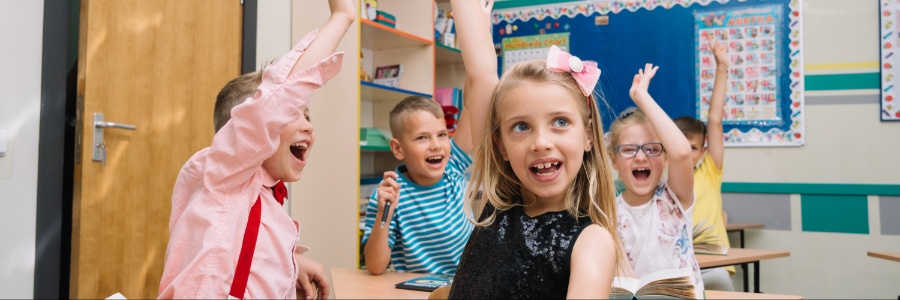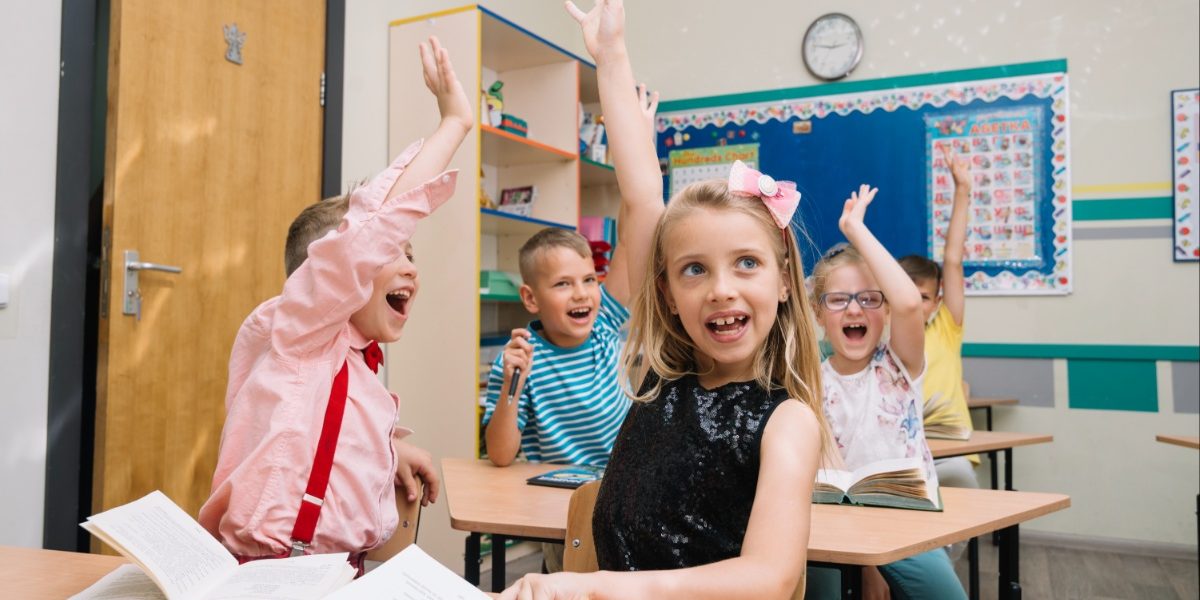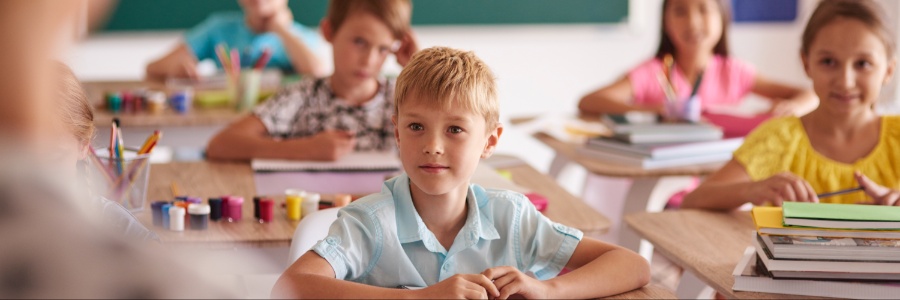Home / Students / Learning / Learning strategies / The Importance of Small Class Sizes in Private Schools in North Miami Beach
The Importance of Small Class Sizes in Private Schools in North Miami Beach
Small class sizes refer to the number of students in a classroom, which can vary from very small (e.g. fewer than 10 students) to larger classes of up to 25 or more students. In private schools, the size of the classes is typically much smaller than in public schools. Smaller classes offer greater individual attention and allow more time for teachers to engage with their students in meaningful conversations.

The importance of small class sizes is well established in educational research, as pupils learn better when they receive individualized attention from their teacher. This one-on-one interaction allows teachers to differentiate instruction and address student needs efficiently.
Furthermore, smaller classes enable more active learning opportunities and collaborative work amongst students, thus enhancing social skills such as communication and problem-solving. As a result, smaller classes inspire greater student engagement and participation leading to improved academic performance and overall development.
North Miami Beach is home to several private schools that offer high-quality education with small class sizes ranging from 16–18 students per class. The low teacher-student ratio ensures excellent student progress monitoring while providing extra care if needed. Hence, parents can be assured that their children will be able to reach their full potential within these learning environments since every child’s educational requirements are met with personalized attention and support from experienced educators.
Advantages of Small Class Sizes
When deciding which school is the best fit for your child, class size should definitely be a factor to consider. Private schools in North Miami Beach often have smaller classes than public schools, which has several advantages for both students and faculty.
- Better Student-Teacher Interaction. Smaller class sizes mean that every student receives more individual attention from their teacher. Teachers can better observe each student in the classroom, as well as more quickly recognize their strengths and weaknesses. With fewer students in the room, teachers are able to build longer, deeper relationships and more accurately assess their needs and learning styles. Smaller classes also contribute to creating a better rapport, allowing teachers to get to know each student on a personal level, which leads to improved communication and understanding.
- Improved Academic Performance. Research overwhelmingly shows that students respond better in smaller classes. It stands to reason; when there are fewer students competing for attention, it is easier for them to make progress academically. In addition, teachers can focus on teaching specific skills or topics at a higher level of depth since they don’t have as many distractions from other students who may have different interests or abilities. This allows for more complex topics that require higher-level thinking skills such as analysis and evaluation rather than basic rote learning of facts.
- Greater Flexibility for Teachers. With smaller classes, teachers are able to tailor instruction to meet the individual needs of each student much more easily than larger classes allow. Private schools prioritize making sure their teachers are prepared and trained properly so they can better help each student succeed with personalized instruction rather than having a “one size fits all” approach that some schools may adopt due to limited resources.
- Better Behavior and Fewer Disciplinary Problems. Large classes tend to lead to disruptive behavior since it’s easy for kids to get lost in the shuffle if there are too many of them in one room. In small classes, however, it’s much easier for teachers to establish control over student behavior since every voice is heard and accounted for during discussions or activities. Having fewer disciplinary problems also has the benefit of giving teachers more time back into instruction and learning activities.
 Impact of Small Class Sizes on Student Outcomes
Impact of Small Class Sizes on Student Outcomes
The size of classes in schools has been a major factor in determining the overall learning outcomes of students. And while there are numerous factors that can impact the educational experiences of students, the size of classes can be particularly influential when it comes to student outcomes.
In recent years, there has been a significant push towards reducing class sizes as research has suggested that smaller class sizes tend to produce:
- better results and higher graduation rates,
- improved college readiness, and
- better long-term academic and career success.
The most compelling evidence to support the idea that smaller class sizes are beneficial comes from a 2016 report by RAND Corporation which studied class size reductions in Tennessee’s public schools. The study found that when classes contained fewer than 22 students, test scores rose significantly in comparison to larger classes. This was especially true for math scores – an area where improvement is critical for future college and career preparedness.
A study conducted by the University of California, Irvine found that graduating from a high school with consistently small classes resulted in improved college enrollment rates, increased college retention rates and higher scores on standardized tests such as the SAT and ACT. Moreover, this same study found that small class sizes produced graduates who were more likely to pursue postgraduate studies after college than those who were part of larger classes.
In addition to increases in academic performance, smaller classes can also lead to more personalized instruction and more frequent interactions between teachers and students. This level of individual attention can make all the difference when it comes to helping students understand difficult concepts, develop critical thinking skills and build self-confidence which are integral components for future success regardless of field or industry.
Of course, it’s important for educators and parents alike to remember that reducing class sizes isn’t a magical solution for improving student outcomes. In order for any changes, whether large or small, to have positive long-term effects on education outcomes, additional resources must be provided including adequate funding for high-quality teachers along with support services such as counseling programs or extra help sessions outside of regular class hours.
When it comes down to it, however, there is an abundance of evidence suggesting that small class sizes can play an important role in helping improve the educational experiences of young people so they can achieve their potential throughout their educational journey, as well as later in life.
 Enhancing Learning Experiences through Small Class Sizes in North Miami Beach Private Schools
Enhancing Learning Experiences through Small Class Sizes in North Miami Beach Private Schools
Small class size is an important factor in providing a successful educational experience for students – both in terms of academic performance, as well as the overall learning environment. In North Miami Beach, private schools have been able to make use of smaller class sizes, with some schools maintaining a student-teacher ratio of 15:1 or less.
This setting enables teachers to provide students with more engaging instruction, which can result in better student-teacher interaction, improved academic performance, and greater flexibility for teaching staff. It also encourages better behavior from students, leading to fewer disciplinary problems.
The value of small class sizes should be emphasized by parents, educators, and community leaders in North Miami Beach. Parents should consider the importance of small class sizes when looking for private schools for their children. Through these efforts, North Miami Beach private schools can maintain their benefit from smaller classes and ensure a successful educational experience for its students. Contact us to receive more information about our school and how small class sizes benefit our students.



 Impact of Small Class Sizes on Student Outcomes
Impact of Small Class Sizes on Student Outcomes Enhancing Learning Experiences through Small Class Sizes in North Miami Beach Private Schools
Enhancing Learning Experiences through Small Class Sizes in North Miami Beach Private Schools


